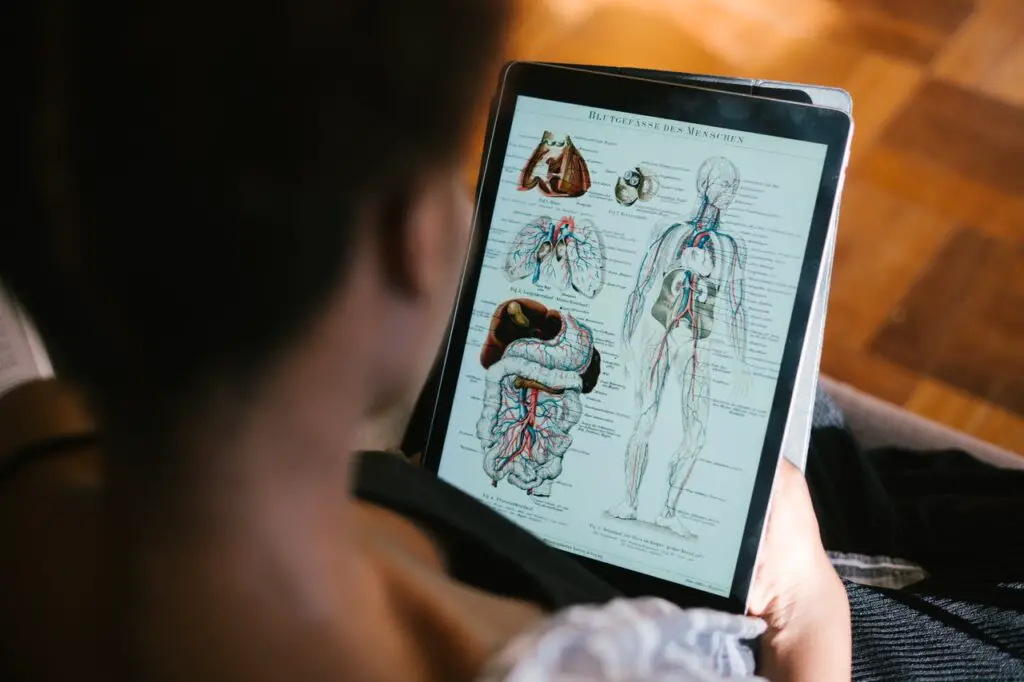Have you always wanted to learn more about the human body but are unsure of what classes or books to purchase? Or you’re interested in pursuing a career in medicine and you need some free resources in order to get started. To help you speed up your learning process we have compiled a list of the best free online anatomy courses offered by the top educational institutions in the world.
Best Free Online Anatomy Course
Coursera Anatomy Specialization University of Michigan

The University of Michigan’s Anatomy Specialization is the best way to learn human anatomy and understand how it relates to your everyday life.
This specialization has been created for people who want to learn more about their own body, or for anyone interested in learning more about human anatomy to pursue a new career path.
By taking this course you will gain an understanding of the complex systems that make up our bodies and also get the chance to explore several different organs throughout your journey through the four self-contained courses in this specialization.
Learning anatomy can be hard. There are so many different systems to study, and it’s easy to get lost in the details. This course will help you cut through all of that confusion by breaking down each system into its component parts, and explaining how those parts function together as a whole.
By taking this course you will gain a solid foundation in human biology and an understanding of the body’s structure and function that is essential for success in future health-related studies or professions such as medicine, physical therapy, or nursing.
You’ll also have access to Coursera’s world-class learning platform with tools like video lectures from top professors, interactive quizzes; practice exams, image galleries, animations & 3D models – everything you need to excel at your own pace.
The four courses that make up this specialization include:
- Anatomy: Musculoskeletal and Integumentary Systems
Anatomy: Cardiovascular, Respiratory and Urinary Systems
Anatomy: Human Neuroanatomy
Anatomy: Gastrointestinal, Reproductive and Endocrine Systems
Introductory Human Physiology Duke University
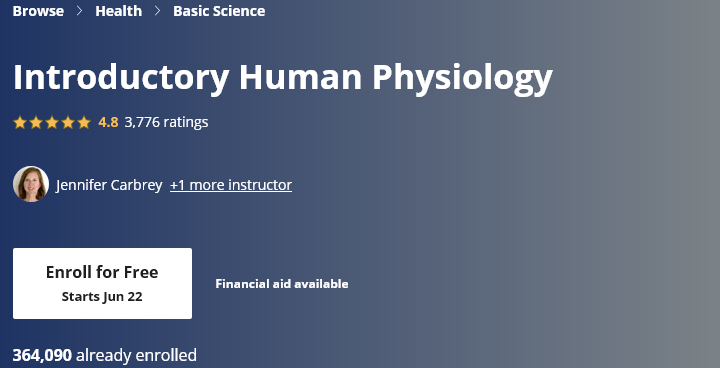
Introduction to Human Physiology – Duke University is a free online course that explores how the body works as an integrated whole with nine organ systems working together for survival.
This course was designed specifically for non-science majors who wish to learn more about the human body without taking a formal college-level class on anatomy and physiology.
Even though no prior knowledge of science or medicine is required for understanding this material some familiarity with high school biology would be helpful.
This course can also serve as a review of basic physiology concepts before entering a health care profession such as nursing or physical therapy.
Yale University Anatomy of the Chest, Abdomen, and Pelvis
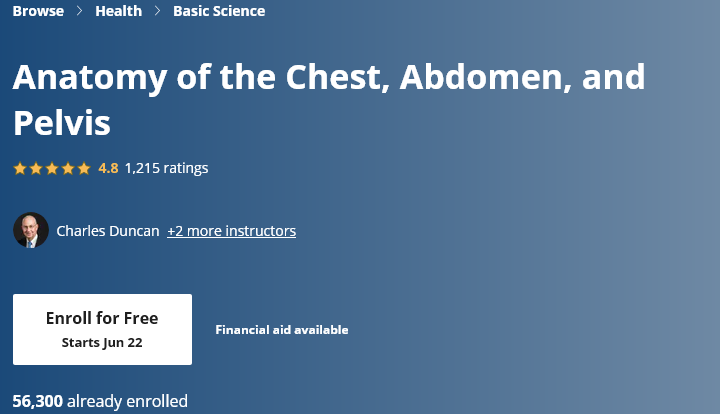
Yale University created this free course so that everyone can have access to world-class anatomy education. It covers everything from the basics like gross anatomy through functional systems like the respiratory system right up to specific body parts such as the heart and liver.
This online course has been developed by Yale University for first-year medical students, so it’s easy for beginners who have never even held a scalpel before but also challenging enough for advanced students looking to review their knowledge.
The aim of this course is simple; create an interactive learning experience with short videos that anyone can understand without getting bogged down in jargon or overly complicated explanations – just clear information presented in an engaging format so it sticks with you.
However, just be mindful that this course does feature live dissections of human cadavers, so viewer discretion is advised.
Recommended Textbook:
GRAY’S ANATOMY FOR STUDENTS
Anatomy: Gastrointestinal, Reproductive and Endocrine Systems University of Michigan

This Anatomy Course on Gastrointestinal, Reproductive, and Endocrine Systems is designed to help you learn key concepts and terms related to the digestive, endocrine, and reproductive systems by breaking down these topics into smaller parts that are easier to understand.
The gastrointestinal, reproductive, and endocrine systems are made up of a complex network of organs that all work together to help the body digest food, reproduce and secrete hormones.
Many people have trouble memorizing these structures because they’re not sure how they relate to one another or what their function is.
This course will cover everything you need to know about each system from top to bottom so you can understand how each organ works so you can make sense of them.
In addition, since the best way for you to learn this information is through real-world experience, this course includes videos of real dissection procedures performed on cadavers as well as images from artistic renditions of internal organs like those found in medical textbooks.
Harvard University Human Anatomy: Musculoskeletal Cases

Harvard University has made its Human Musculoskeletal Anatomy course available for free online. This course is designed to allow you to gain experience from real doctors performing anatomical dissections and interpreting radiologic imaging.
This free online anatomy course has a unique format where you follow simulated patients from injury to operating room as you learn about five common musculoskeletal injuries.
The goal of this course is not for you to learn how to perform dissections or interpret medical images, but rather it provides a deeper context for standard clinical practices during the process of diagnosing and treating each injury.
In addition, this course includes some resources that will help your learning experience. These include links to relevant content on the internet and a glossary of terms introduced throughout the case studies.
Anatomy: Musculoskeletal and Integumentary Systems University of Michigan

In this Free Online Anatomy Course, you will learn everything you need to know about the integumentary system and musculoskeletal system so that you can have an understanding of how they work. At the end of this course, we guarantee that not only will you understand each component individually but also how they work together as systems within our bodies.
By taking this class, you will learn everything from basic musculoskeletal anatomy to more complex topics like joint disorders and congenital anomalies. You’ll also get access to videos, quizzes, and other interactive tools so that you can review what you’ve learned as needed.
Going Out on a Limb: Anatomy of the Upper Limb – University of Pennsylvania

Going Out on a Limb will help you learn human upper limb anatomy by making connections between the structure of each bone and muscle with its actions and innervation.
This course will break down the complex system of bones, muscles, joints, and nerves into easy-to-understand concepts that will help you better understand how the upper limb works. This is an introductory course so it won’t get too deep into any one topic but it should give you a good foundation for continuing your studies in anatomy or physical therapy.
Overall, this course will give you an overview of the entire upper limb so that you’ll have context for everything that’s going on in the human arm. The best part? You can take this course entirely for free online.
Human Anatomy & Physiology – Udemy

This Free Human Anatomy & Physiology Course from Udemy will teach you everything you need to know about human anatomy in an easy-to-understand manner with plenty of visual aids so that you can actually see how different parts of your body work together as one system.
This course also has quizzes at the end of each section so that you can test yourself on what you’ve learned along the way.
This totally free course covers everything from bone structure and formation to muscle function and tissue development. The course also includes high-quality images as well as audio narration by a professional instructor who has years of experience teaching anatomy courses to students around the world.
Head and Neck Anatomy/ Neuro Anatomy – Udemy

This Free Head and Neck anatomy/ Neuro Anatomy Course will walk you step by step through all of the important concepts in head & neck anatomy so you can learn it quickly and easily! You’ll be able to understand topics like skull bones, facial muscles, nerves/nerves branches/branchial arches/ pharynx, etc.
You will learn everything about the head and neck from scratch with simple line drawings, 3D images, and animated videos. This course will give you the structure and guidance that you need so that you can get the most out of your study time. It’s broken down into small chunks, each one focusing on a specific part of the head and neck area.
By the end of this course, you’ll feel confident in your knowledge of head & neck anatomy so that when exam time comes around there won’t be any surprises.
Human Anatomy and Physiology – Alison
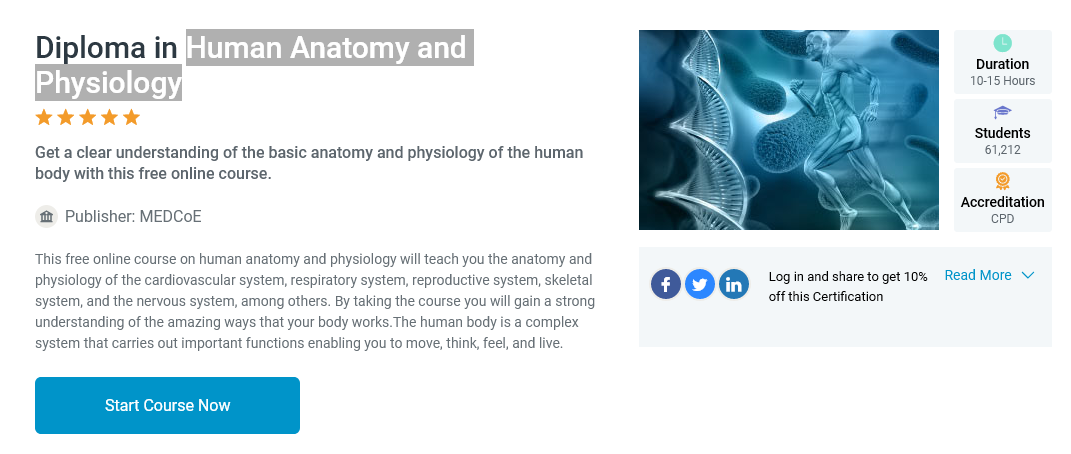
This Free Online Human Anatomy and Physiology course is designed to give you an overview of every system in your body. You will learn the basics of each system and see how they all interact together. By understanding these systems it becomes much easier to get a better grasp of how your body works as a whole.
We know you might not have time for a full-time course, but it is possible for you to get all of the information that you need by taking this free online course from Alison.com.
This course is easy-to-follow and designed so that anyone can succeed even without previous knowledge about anatomy or physiology. By studying these materials, students will gain a thorough understanding of how their bodies work, and you can also opt to get a certificate of completion at the end of this course.
Human Body Systems – Khan Academy
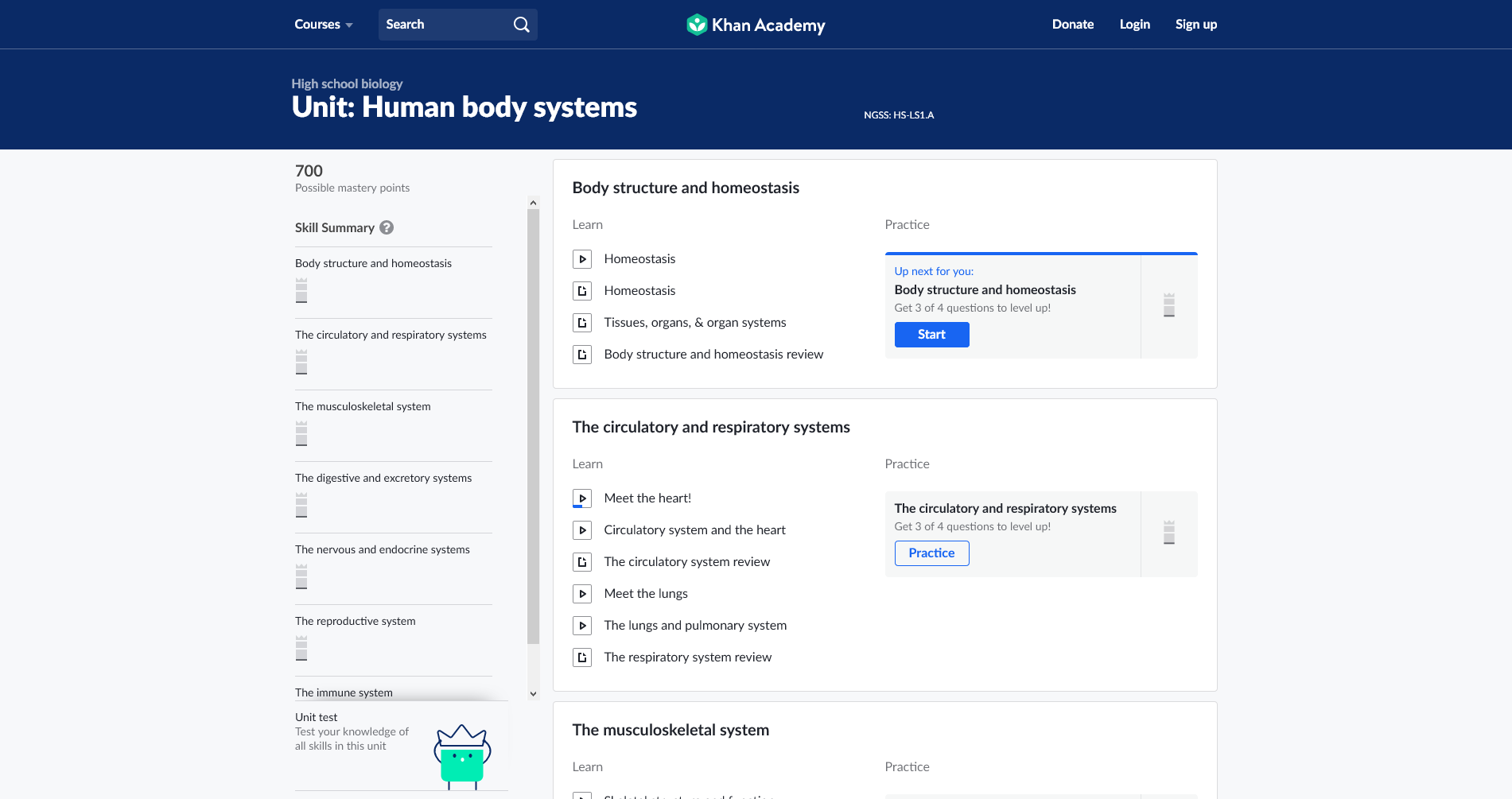
Khan Academy’s Human Body Systems course is an online, self-paced program that will teach you all about how your body works. This free lesson series will help you understand why we are here, what makes us tick, and what happens when things go wrong with our bodies.
Best of all, the Human Body Systems program was designed by expert educators who want to share their knowledge with everyone for free.
Khan Academy’s Human Body Systems course is a great way for anyone to learn more about how our bodies work. It covers all of the major systems and organs that make up your body like your circulatory system, respiratory system, and digestive system.
By watching these videos you’ll learn everything there is to know about biology from cells to organs while also gaining a better understanding of yourself as part of this amazing system called life on earth. You’ll gain insight into topics like evolution, biodiversity, anatomy & physiology, and ecology & environment through dozens of short lessons covering each topic thoroughly
This free course is a great resource for students looking to supplement their education or just anyone who wants to learn more about their own bodies.
Not only does this site have an extensive library of videos covering everything from the nervous system to cardiovascular disease, but you can also access these videos for free online or on your phone through their app.
Plus, since Khan Academy has such a vast library of free online courses you could spend hours watching educational videos that cover everything from basic anatomy all the way up through neuroscience and advanced biology.
Table of Contents

